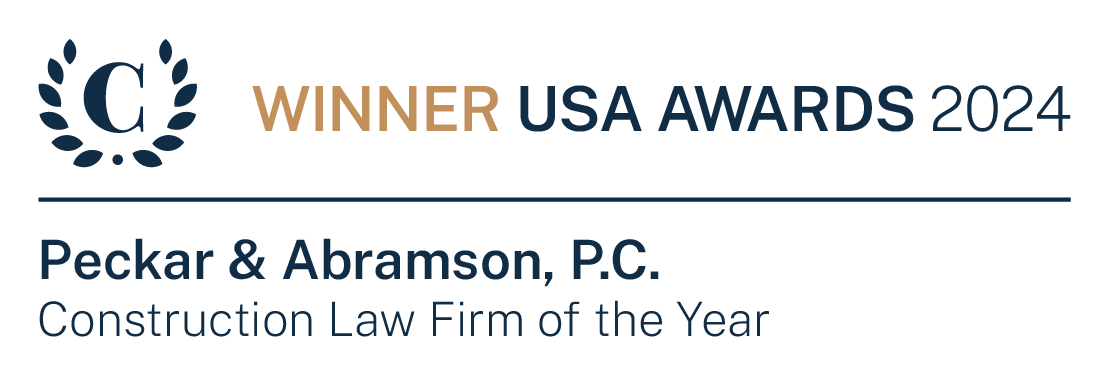Client Alerts & Publications
Preparing for the Threat of New Tariffs: Three Clauses to Look for in Your Federal Construction Contracts
Authors: Abby Bello Salinas, Michael A. Branca,
Published Date: February 20, 2025
The Trump administration’s imposition of new tariffs is anticipated to have large-scale effects on costs in the construction industry. This article focuses on three important clauses in direct federal contracting that dictate contractors’ rights and responsibilities when it comes to price escalation, increased costs, and taxes imposed after contract execution. P&A has previously provided similar insights in the context of private contracts here and here.
Newly Imposed Tariffs
On February 1, 2025, the Trump administration issued executive orders imposing 25 percent tariffs on Canadian and Mexican goods, a 10 percent tariff on imports from China, and a 10 percent tariff on Canadian energy resources. Two days after the announcement, President Trump paused the tariffs on Canadian and Mexican imports for one month to conduct negotiations with these ally nations. The tariff on Chinese imports went into effect on Tuesday, February 4, 2025. In response, China announced it was implementing counter-tariffs against the United States, including a 15% tariff on coal and liquified natural gas products, as well as a 10% tariff on crude oil, agricultural machinery, and large-engine cars exported from the United States to China.
Additionally, the Administration has announced 25% tariffs on all steel and aluminum imports, including those from previously exempt ally countries Argentina, Canada, Japan, Mexico, South Korea, the European Union, the United Kingdom, and more.
These tariffs will undoubtedly have far-reaching implications for the construction industry. Here are three clauses to review in current government contracts and solicitations to stay ahead of the risks:
1. After-Imposed Tax Clause
Federal Acquisition Regulation (“FAR”) 52.229-3
FAR 52.229-3, Federal, State, and Local Taxes, allows for the recovery of taxes and duties imposed after the bid opening date in sealed bid procurements or after the contract’s effective date in negotiated procurements.
While on the surface it may seem that this clause provides an easy answer for contractors, the Armed Services Board of Contract Appeals clearly found that adjustments under 52.229-3 must be tied to direct costs incurred to pay increased taxes and duties. In Appeal of Pangea, Inc., the Board found that an increase in the price of domestic steel resulting from a tariff placed by the United States on foreign steel was not a federal tax or duty under the meaning of FAR 52.229-3. Thus, contractors will need to look elsewhere for general inflation costs that may result from the threatened foreign tariffs.
2. Economic Price Adjustment (EPA) Clauses
FAR 52.216–2. FAR 52.216-3, FAR 52.216-4, DFARS 252.216-7000
The FAR allows for EPA clauses to be inserted into fixed-price contracts where the Contracting Officer foresees potential fluctuations in labor, material, and/or supply costs. These clauses shift the risk of price changes to the Government, which is why they rarely appear in fixed-price construction contracts. However, EPA clauses can be beneficial to the Government by allowing for bids reflecting lower actual costs, rather than bids priced to match worst-case scenario pricing projections. EPA clauses may also mitigate the risk of a contractor becoming unable to complete a project.
As many general contractors recall from the impact of the COVID-19 pandemic, the Government is not obligated to provide price adjustments for inflation without an EPA clause. Accordingly, Contractors should check their agreements for the inclusion of an EPA clause, as well as the important terms of the clause, such as: (1) events that trigger the applicability of the clause (e.g., a percentage increase in costs); (2) whether the clause dictates limiting bands (i.e., ceilings and floors for price adjustments); and (3) any labor or material indices referenced in the clause as meters for price changes.
3. Limitation of Cost Clauses
FAR 52.232-20, FAR 52.232-22
Cost-reimbursement contracts under the FAR will include FAR 52.232-20, Limitation of Cost (if the contract is fully funded) or FAR 52.232-22, Limitation of Funds (if the contract is incrementally funded). These clauses impose strict notice requirements on a contractor whose anticipated costs exceed a pre-determined threshold (often 75% of estimated total costs). As part of the notification, the Contractor must provide a revised estimate of the total cost of performance. Without the appropriate notice, the Government is not obligated to reimburse the Contractor for any costs in excess of the original expected costs. Accordingly, it is important for a Contractor under a cost-reimbursement federal contract (1) to be aware of the notice requirements of any existing limitations clauses and (2) to ensure that it has an approved accounting system that accurately tracks costs.
Peckar & Abramson is monitoring government developments that may impact the construction industry. Proactively staying updated on policy changes and funding risks is the best way to stay ahead of necessary contingency planning. Ensure you are staying up to date and subscribe to P&A’s alerts here.
For more information, please reach out to Abby Bello Salinas and Michael A. Branca.
We would like to acknowledge the valuable contributions of law clerk Michael Hyatt in the preparation of this alert.










